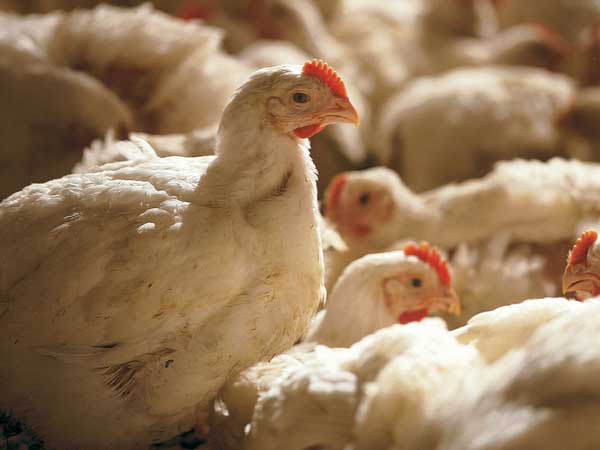Rendered products in poultry diets are a real benefit

The poultry industry in the US and worldwide has a long history of use of rendered products in its rations. Rendered products are the by-products of the food processing industry and include products such as meat and bone meals, poultry by-product meal, feather meal, bakery by-products, blood meal and a variety of fat products. The availability of a variety of rendered by-products may be of benefit to the modern poultry industry.
The slaughter of chickens is at an all-time high globally and is projected to continue to grow. The evolution of the industry has resulted in advances in diet formulation as new products and technology have become available. As this evolution took place formulations became more sophisticated, moving from hand to computer formulation, from a total protein basis to a digestible amino acid basis and incorporation of a variety of micronutrient sources. All of this has led to reduced cost and maximum bird performance for the poultry industry. However, as the industry has increased in size and scope, energy and protein availability and prices have become an issue for the industry and its continued growth.
Rendered protein sources are a benefit to the poultry industry. A variety of high quality products are available at competitive prices. Each of these is an excellent source of specific nutrients and generally provides a cost effective source of protein. Meat and bone meals provide an excellent source of amino acids and phosphorus. Poultry by-product meals provide even higher levels of protein and energy as well as acting as an excellent source of phosphorus. Feather meal is very high in sulphur amino acids. Allowing several protein sources into the computer feed formulation matrix allows the computer to select ingredients to fill specific nutrient needs and thus lower costs. Combined, these products can be used to provide substantial cost savings to the poultry industry and use of the products is quite high by the industry in the US. Use of these products is estimated to save the industry as much as $10 for each ton of feed produced in the US. Strong utilisation of these products by the poultry industry is the norm and is expected to continue into the future.
Rendered fats are generally substantially cheaper than vegetable oils such as soybean oil, which is used extensively in poultry rations internationally. This allows for higher inclusion rates of fat and thus higher energy diets. These higher energy diets provide faster growth and improved feed conversion, providing a competitive advantage when available.
Use of rendered fats
Use of fats for animal feed has many advantages. Some of the benefits of fat addition are noted below as well as some concerns:
- Concentrated source of energy and the main method of increasing the energy content of diets
- Increases growth rates
- Increases feed efficiency
- Decreases feed intake
- Source of linoleic acid
- Decreases dustiness of feeds and reduces dust losses
- Lubricant for equipment in feedmills
- Increases palatability of feeds
- Increased rate of gain can decrease age at market and increase throughput of housing systems
- Lower heat increment is useful during heat stress to keep caloric intake up
- May slow gut transit of other feeds, resulting in increased digestibility
- May show an ‘extra-caloric’ effect
- May be more cost effective than other energy sources
- Concentrated feeds can decrease transportation costs for feed delivery
- Use of higher levels of fat may negate the effects of pelleting.
Some concerns that should be noted with fat utilisation:
- Measurement of Metabolisable Energy (ME) content can be somewhat difficult
- Potential for rancidity
- Equipment needs relative to fat additions must be adequate
- Poor digestibility of saturated fats by the young bird.
A number of different fat sources are available for poultry from the rendering industry. The primary sources are poultry fat, tallow, yellow grease, lard and blends. In other countries there is considerable use of vegetable fats such as sunflower oil, soybean oil or palm oil. Generally these fats are relatively expensive when compared to rendered products, resulting in lower fat utilisation and thus lower ME diets.
Use of rendered protein sources
Use of rendered protein sources for animal feed has many advantages. Some of the benefits of their addition:
- Generally very cost competitive relative to vegetable protein sources
- Use will reduce total diet costs in most cases
- Source of high quality protein
- In most cases highly digestible
- May help balance out the amino acid needs
- In many cases will provide a small increase in growth rates over vegetable protein only diets
Excellent source of highly available phosphorus and other minerals.Some concerns that should be noted with utilisation of rendered protein sources:
- Poor quality control could result in decreased amino acid digestibility
- Proper formulation methods must be used to make most effective use (digestible amino acids)
- Potential for microbial contamination if improperly handled
- Variation of product due to material mix, processing methodology.
Use of rendered protein products has been limited in the past for a variety of reasons. Older research indicated a growth depression if use exceeded certain limits such as 7.5% of the diet. This depression in growth occurred primarily due to the reduced digestibility of many products relative to soybean meal. Older data from our lab indicated almost 10% less digestible lysine in meat and bone meal than in soybean meal (Firman, 1992). Thus as the levels of meat and bone meal increased in the diet, the level of lysine available for use by the bird decreased. While the routine safety factor covered this deficit to a point, an amino acid deficiency eventually developed and growth rate was depressed. Formulation on a digestible basis eliminated this problem and inclusion rate has become less of an issue. Additionally, more recent product tests approached soybean meal in terms of amino acid digestibility. The maximum inclusion rate is more likely to be due to the high levels of calcium and phosphorus that occur at higher inclusion rates although cost issues usually dictate levels below this. The main impetus for use of rendered products is the overall cost savings. As noted in Figure 1 and Table 2, increasing the number of protein sources will decrease costs and also make formulation easier, improve nutrient balance, and decrease nutrient excesses.
Author:
Dr Jeffre Firman is a professor of poultry nutrition at the University of Missouri and an international consultant.











